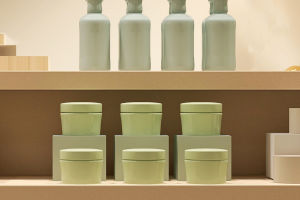Welcoming a newborn into your family is a joyous occasion filled with love and excitement.
As a parent, you want to ensure that your baby receives the best care possible, and one crucial aspect of this care is choosing the right bottle for feeding.
With countless options available on the market, it can be overwhelming to determine which bottle will suit your baby's needs best. Fear not, as you've compiled a comprehensive guide to help you make an informed decision.
Understanding Your Baby's Needs
Every baby is unique, and their feeding preferences can vary. Some babies may have specific dietary requirements, while others may have preferences for certain bottle features. Before selecting a bottle, consider factors such as your baby's age, feeding habits, and any existing medical conditions. Consulting with your pediatrician can also provide valuable insights into the type of bottle that would be most suitable for your baby.
Types of Bottles
Bottles come in various shapes, sizes, and materials, each offering distinct advantages. Here are some common types to consider:
1. Plastic Bottles
Lightweight and durable, plastic bottles are a popular choice for many parents. Look for bottles that are free from harmful chemicals such as BPA, phthalates, and PVC to ensure your baby's safety.
2. Glass Bottles
Known for their durability and ease of sterilization, glass bottles are an excellent option for parents seeking a more eco-friendly alternative. Keep in mind that glass bottles may be heavier than their plastic counterparts and can break if mishandled.
3. Silicone Bottles
Silicone bottles are soft, flexible, and easy to clean, making them ideal for on-the-go feeding. They are also free from harmful chemicals and are less likely to retain odors or stains.
4. Anti-Colic Bottles
Designed with special venting systems, anti-colic bottles help reduce air intake during feeding, minimizing the risk of gas, spit-up, and discomfort for your baby.
5. Breast-like Nipple Bottles
If you're transitioning between breastfeeding and bottle-feeding, consider bottles with nipples that mimic the shape and feel of the breast. This can help ease the transition for your baby and encourage a natural feeding experience.
Choosing the Right Nipple
The nipple plays a crucial role in your baby's feeding experience, so it's essential to select one that suits their needs. Nipples come in various shapes, flow rates, and materials, so consider the following factors when making your selection:
1. Flow Rate
Newborns have different feeding abilities than older babies, so opt for a nipple with a slow flow rate to prevent overfeeding and reduce the risk of choking. As your baby grows, you can gradually transition to faster flow nipples to accommodate their increasing feeding speed.
2. Material
Nipples are typically made from silicone or latex. Silicone nipples are more durable, while latex nipples tend to be softer and more flexible. Choose a material that your baby finds comfortable and easy to latch onto.
3. Shape
Nipples come in different shapes, including traditional round nipples and wider, contoured nipples. Consider your baby's latch and feeding style when selecting a nipple shape to ensure a proper seal and minimize air intake.
Practical Considerations
In addition to the bottle and nipple features mentioned above, here are some practical considerations to keep in mind when choosing a bottle for your baby:
1. Ease of Cleaning
Opt for bottles that are easy to disassemble and clean thoroughly to maintain proper hygiene and prevent bacterial growth.
2. Compatibility
If you plan to use a breast pump, ensure that the bottles you choose are compatible with your pump for convenient expressing and storage of breast milk.
3. Cost
While cost shouldn't be the sole determining factor, consider your budget when selecting a bottle. Keep in mind that investing in high-quality bottles may save you money in the long run by avoiding the need for frequent replacements.
Choosing the right bottle for your baby is an important decision that requires careful consideration of your baby's unique needs and preferences. By understanding the different types of bottles, nipples, and practical considerations, you can make an informed choice that promotes your baby's health, comfort, and well-being. Remember, every baby is different, so don't be afraid to experiment with different bottles until you find the perfect fit for your little one.


